About HolonIQ Indices
HolonIQ’s Global Impact and SDG Indices are the world’s leading research-grade benchmarks to track the performance of positive impact companies around the world. Combining deep expertise in global impact thematics, capital markets and technology, HolonIQ’s Global Impact and SDG Indices provide independent and unbiased benchmarks for governments, investors and companies around the world seeking to create sustainable and positive impact.
HolonIQ Indices are composed of positive impact companies that derive a majority of their revenue from products and services that address at least one of HolonIQ’s 9 Global Impact thematics or one of the world’s major social and environmental challenges as identified by the 17 United Nations Sustainable Development Goals.
Index constituents are selected by HolonIQ’s Global Intelligence Unit and scored on a number of emerging dimensions including digital exposure and ESG scores. Each of the 9 Global Impact thematics include regional and country indices.
HolonIQ Indices are currently in ‘Beta’ design and testing and will soon be available via an API Subscription and on our Global Intelligence Platform. HolonIQ also provides an array of services to clients interested in custom index development.
The list below identifies the HolonIQ Indices in research and development.
EDUCATION
- EDU
- EDU.AMER
- EDU.EMEA
- EDU.APAC
- EDU.AU
- EDU.BR
- EDU.CA
- EDU.CN
- EDU.DE
- EDU.FR
- EDU.IN
- EDU.JP
- EDU.KR
- EDU.UK
- EDU.US
WORK
- WORK
- WORK.AMER
- WORK.EMEA
- WORK.APAC
- WORK.AU
- WORK.BR
- WORK.CA
- WORK.CN
- WORK.DE
- WORK.FR
- WORK.IN
- WORK.JP
- WORK.KR
- WORK.UK
- WORK.US
HEALTHCARE
- HEALTH
- HEALTH.AMER
- HEALTH.EMEA
- HEALTH.APAC
- HEALTH.AU
- HEALTH.BR
- HEALTH.CA
- HEALTH.CN
- HEALTH.DE
- HEALTH.FR
- HEALTH.IN
- HEALTH.JP
- HEALTH.KR
- HEALTH.UK
- HEALTH.US
FOOD
- FOOD
- FOOD.AMER
- FOOD.EMEA
- FOOD.APAC
- FOOD.AU
- FOOD.BR
- FOOD.CA
- FOOD.CN
- FOOD.DE
- FOOD.FR
- FOOD.IN
- FOOD.JP
- FOOD.KR
- FOOD.UK
- FOOD.US
WATER
- WATER
- WATER.AMER
- WATER.EMEA
- WATER.APAC
- WATER.AU
- WATER.BR
- WATER.CA
- WATER.CN
- WATER.DE
- WATER.FR
- WATER.IN
- WATER.JP
- WATER.KR
- WATER.UK
- WATER.US
CLIMATE
- CLIMATE
- CLIMATE.AMER
- CLIMATE.EMEA
- CLIMATE.APAC
- CLIMATE.AU
- CLIMATE.BR
- CLIMATE.CA
- CLIMATE.CN
- CLIMATE.DE
- CLIMATE.FR
- CLIMATE.IN
- CLIMATE.JP
- CLIMATE.KR
- CLIMATE.UK
- CLIMATE.US
INFRASTRUCTURE
- INFRA
- INFRA.AMER
- INFRA.EMEA
- INFRA.APAC
- INFRA.AU
- INFRA.BR
- INFRA.CA
- INFRA.CN
- INFRA.DE
- INFRA.FR
- INFRA.IN
- INFRA.JP
- INFRA.KR
- INFRA.UK
- INFRA.US
ENERGY
- ENERGY
- ENERGY.AMER
- ENERGY.EMEA
- ENERGY.APAC
- ENERGY.AU
- ENERGY.BR
- ENERGY.CA
- ENERGY.CN
- ENERGY.DE
- ENERGY.FR
- ENERGY.IN
- ENERGY.JP
- ENERGY.KR
- ENERGY.UK
- ENERGY.US
SPACE
- SPACE
- SPACE.AMER
- SPACE.EMEA
- SPACE.APAC
- SPACE.AU
- SPACE.BR
- SPACE.CA
- SPACE.CN
- SPACE.DE
- SPACE.FR
- SPACE.IN
- SPACE.JP
- SPACE.KR
- SPACE.UK
- SPACE.US
SDGs
- SDG1
- SDG2
- SDG3
- SDG4
- SDG5
- SDG6
- SDG7
- SDG8
- SDG9
- SDG10
- SDG11
- SDG12
- SDG13
- SDG14
- SDG15
- SDG16
- SDG17
About HolonIQ
HolonIQ was founded in 2018 with the vision of building the trusted global source of market intelligence in order to connect the people, ideas and capital that are driving and supporting innovation in social and economic impact sectors.
Starting with the future of education, the fundamental driver for the future of humanity, our work is rapidly growing to focus on the world’s major social and economic challenges. From work and healthcare, climate, food and water to infrastructure, energy and beyond earth to space.
Tracking and mapping innovation in these critical challenges is difficult, and yet critical to sustainability and the future of humanity. HolonIQ’s global market intelligence platform provides data and analysis of developments in these global markets, providing connected data, analysis and insights on technology, companies, countries and industries and how their innovation activities form patterns and trends in the market.
We power governments, institutions, companies, and investors by connecting billions of data points about innovation, technologies, capital flows, jobs, skills, research and patents and apply machine learning to analyze, evaluate and identify patterns, generating insights that help clients make data-driven decisions that matter.
Future of Education

The Future of Education demands access to information and experiences that build knowledge and skills accessible by all people at all stages of their lives for personal fulfilment and to benefit a rapidly evolving world.
The Future of Education Index includes a large number of stocks across the education sector, however the Index has been weighted in favour of those digitally focussed companies using HolonIQ’s scoring fingerprint which rates a stock from 0-10 based on their digital presence.
Back to topFuture of Education Index vs S&P500
Future of Work

The Future of Work is heavily impacted by rapid technological innovations and socio-economic changes. The immense impact of COVID-19 has further accelerated changes to the future of work, making the need for more advanced digital skills, collaboration and flexibility of increasing importance.
Stocks in the Future of Work Index have been selected with a focus on those companies who are enabling, enhancing and powering new, digital ways of working, including sourcing and retaining global talent, tracking and delivering work, collaboration and teamwork, managing performance.
Back to topFuture of Work Index vs S&P500
Future of Healthcare

Digital transformation, enabled by advanced technologies, new approaches to data, access and interoperability is likely to shape the future of health. Early intervention and sustaining well-being, rather than responding to illness will be central to the future of health.
The Future of Health Index focuses on companies using technology and data to support future health services such as medical devices, data, diagnostics and telehealth, biotechnology and pharmaceuticals.
Back to topFuture of Healthcare Index vs S&P500
Future of Food

Food security, climate change and sustainability are at the forefront of challenges and opportunities for the future of food. From the transformation growing, packaging, delivery and convenience, the business of food is rapidly evolving right across the value chain.
The Future of Food Index includes stocks which are focused on next generation food and agriculture, sustainability and technology.
Back to topFuture of Food Index vs S&P500
Future of Water

The water industry is facing increasing pressures due to factors such as population growth and climate change, which is leading to water scarcity in areas of the world which are already experiencing shortages of water-based resources.
The Future of Water Index features stocks from the water sector focussed on building a more resilient and sustainable water industry.
Back to topFuture of Water Index vs S&P500
Future of Climate

Our current consumption and disposal patterns are causing significant environmental and health issues globally. This creates an urgent need for the world to rethink the way in which we dispose of waste.
The Future of Climate Index includes stocks which are all related to the management of waste as well as pollution and treatment control across the globe.
Back to topFuture of Climate Index vs S&P500
Future of Infrastructure

Population growth, rapid urbanisation, climate change and consumer expectations are driving changes in thinking about infrastructure and mobility. Polycentric cities, home-working, technology for self-driving cars, changes to energy production and other advancements are impacting the priorities for infrastructure globally.
The Future of Infrastructure Index includes stocks which are involved in developing and improving infrastructure, using advanced technology for sustainability and radical innovation.
Back to topFuture of Infrastructure Index vs S&P500
Future of Energy

Energy is the world's largest economic sector. To become more sustainable, securable and affordable for everyone, innovations in alternative energy continue to develop in wind, solar, nuclear and other affordable clean energy sources and models such as micro grids, sustainable energy production, and consumers as producers.
The Future of Energy Index includes stocks which are focussed on the sustainability and production of both renewable and non-renewable energy sources across the globe.
Back to topFuture of Energy Index vs S&P500
Future of Space

Commercial operators are beginning to play an increasingly important role in the space industry. This ranges from launching rockets and satellites, transporting cargo and crew and building infrastructure within the Earth’s orbit.
The Future of Space Index includes companies working to increase our understanding of our planet and our place in the universe, while also focusing on companies developing and maintaining satellite technologies.
Back to topFuture of Space Index vs S&P500
UNSDG
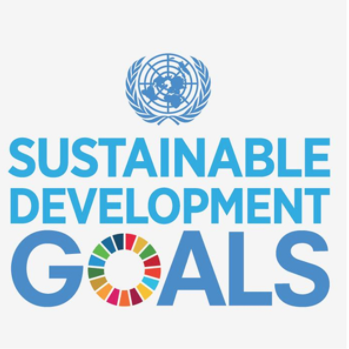
The Sustainable Development Goals (SDGs) were adopted by all United Nation Member States in 2015 as a universal call to action to end poverty, protect the planet and ensure that all people enjoy peace and prosperity by 2030. This set of indicies has been created to provide investors with an opportunity to visualise each of the 17 SDG’s and the companies that are making efforts to follow them. Each stock has been researched and hand-picked to ensure its authenticity when it comes to following these goals.
Back to topSDG 1 - No Poverty
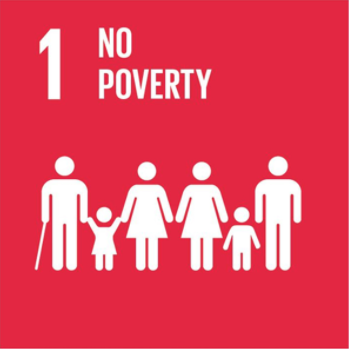
The goal of SDG 1 is to end poverty in all its forms everywhere, including appropriate social protection systems, equal rights to economic resources and sound policy frameworks at the national, regional and international levels.
The stocks in the SDG 1 Index have been identified as those making efforts to reduce poverty across the globe through empowering people & economies and by investing in the workforce.
Back to topSDG 1 Index vs S&P500
SDG 2 - Zero Hunger
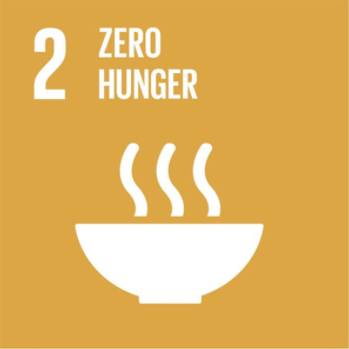
The goal of SDG 2 is to end hunger, achieve food security and improved nutrition and to promote sustainable agriculture.
The stocks in the SDG 2 index are aligned to the goal of improving the quality and security of food to individuals across the globe as well as supporting small-scale food producers around the world.
Back to topSDG 2 Index vs S&P500
SDG 3 - Good Health and Well Being
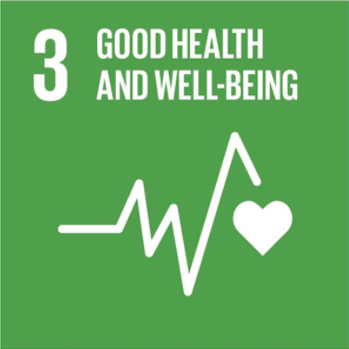
The goal of SDG 3 is to ensure health and well-being for all, including a bold commitment to end the epidemics of AIDS, tuberculosis, malaria and other communicable diseases by 2030. It also aims to achieve universal health coverage, and provide access to safe and effective medicines and vaccines for all.
The stocks in the SDG 3 have been identified as those making efforts to improve global healthcare systems and coverage, as well as furthering the development of healthcare technologies, software and hardware.
Back to topSDG 3 Index vs S&P500
SDG 4 - Quality Education
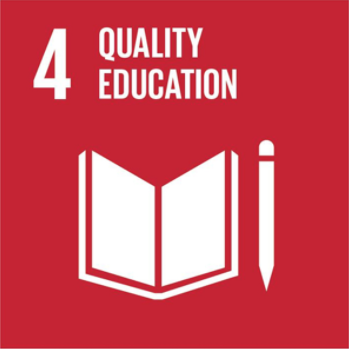
The goal of SDG 4 is to ensure that all girls and boys complete free primary and secondary schooling by 2030. It also aims to provide equal access to affordable vocational training, and to eliminate gender and wealth disparities with the aim of achieving universal access to a quality higher education.
The stocks in the SDG 4 Index have been identified as those making efforts to providing individuals with access to information and experiences that build knowledge and skills for all people at all stages of their lives for personal fulfilment and benefit to society.
Back to topSDG 4 Index vs S&P500
SDG 5 - Gender Equality
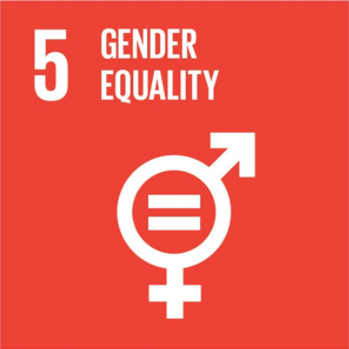
The goal of SDG 5 is to ensure that there is an end to discrimination against women and girls everywhere. There are still gross inequalities in access to paid employment in some regions, and significant gaps between men and women in the labour market.
The stocks in the SDG 5 Index have been identified as those making efforts to eliminate wage gaps and providing equal opportunities to both genders.
Back to topSDG 5 Index vs S&P500
SDG 6 - Clean Water and Sanitation
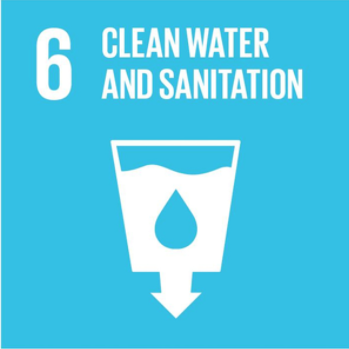
The aim of SDG 6 is to ensure universal access to safe and affordable drinking water by 2030 requires we invest in adequate infrastructure, provide sanitation facilities and encourage hygiene at every level. Protecting and restoring water-related ecosystems such as forests, mountains, wetlands and rivers is essential if we are to mitigate water scarcity.
The stocks in the SDG 6 Index have been identified as those making efforts in encouraging water efficiency and supporting treatment technologies in developing countries.
Back to topSDG 6 Index vs S&P500
SDG 7 - Affordable and Clean Energy
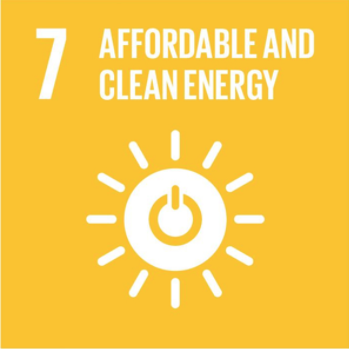
The aim of SDG 7 is to ensure universal access to affordable electricity by 2030 means investing in clean energy sources such as solar, wind and thermal. Adopting cost-effective standards for a wider range of technologies could also reduce the global electricity consumption by buildings and industry by 14 percent.
The stocks in the SDG 7 Index have been identified as those making efforts in expanding infrastructure and upgrading technology to provide clean energy sources in developing countries, as well as providing cleaner energy across the globe.
Back to topSDG 7 Index vs S&P500
SDG 8 - Decent Work and Economy Growth
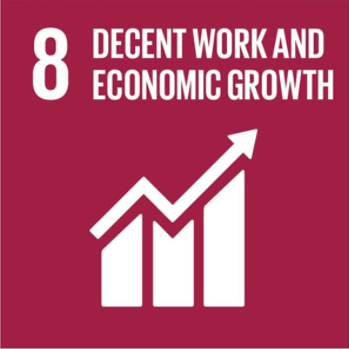
The aim of SDG 8 is to encourage sustained economic growth by achieving higher levels of productivity and through technological innovation. Promoting policies that encourage entrepreneurship and job creation are key to this, as are effective measures to eradicate forced labour, slavery and human trafficking.
The stocks in the SDG 8 Index have been identified as those making efforts to achieve full and productive employment, and decent work, for all women and men by 2030.
Back to topSDG 8 Index vs S&P500
SDG 9 - Industry, Innovation and Infrastructure
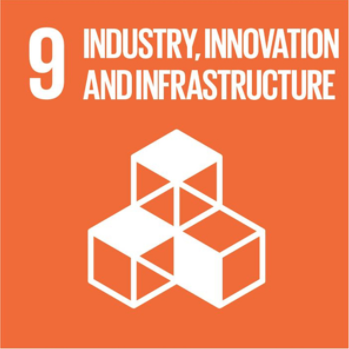
The aim of SDG 9 is to maintain sustained investment in infrastructure and innovation as they are crucial drivers of economic growth and development. With over half the world population now living in cities, mass transport and renewable energy are becoming ever more important.
The stocks in the SDG 9 Index have been identified as those making efforts to increase growth of new industries and information and communication technologies, as well as increasing usage of renewable energy.
Back to topSDG 9 Index vs S&P500
SDG 10 - Reduced Inequalities
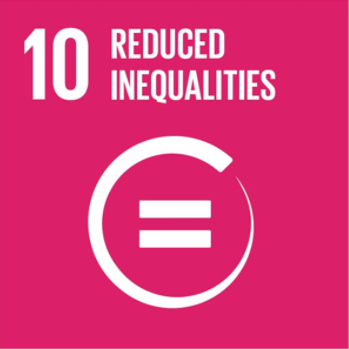
The aim of SDG 10 is to improve the regulation and monitoring of financial markets and institutions, encourage development assistance and foreign direct investment to regions where the need is greatest. Facilitating the safe migration and mobility of people is also key to bridging the widening divide.
The stocks in the SDG 10 Index have been identified as those making efforts to reduce all inequalities across the globe, while also improving the regulation and monitoring of financial markets and institutions, encouraging development assistance and foreign direct investment to regions where the need is greatest.
Back to topSDG 10 Index vs S&P500
SDG 11 - Sustainable Cities and Communities
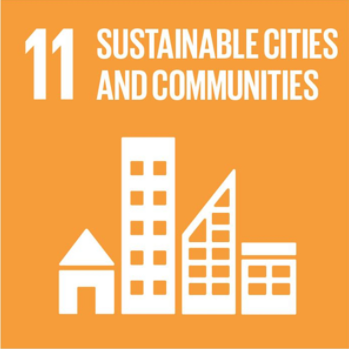
The aim of SDG 11 is ensuring access to safe and affordable housing, and upgrading slum settlements. It also involves investment in public transport, creating green public spaces, and improving urban planning and management in a way that is both participatory and inclusive.
The stocks in the SDG 11 Index have been identified as those making efforts to reduce the number of slum dwellers, inadequate and overburdened infrastructure, worsening air pollution and unplanned urban sprawl.
Back to topSDG 11 Index vs S&P500
SDG 12 - Responsible Consumption and Production
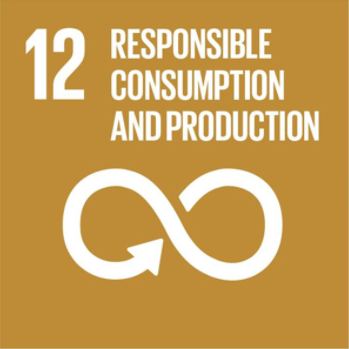
The aim of SDG 12 is halving per capita global food waste at the retailer and consumer levels is also important for creating more efficient production and supply chains. This can help with food security and shift us towards a more resource efficient economy.
The stocks in the SDG 12 Index have been identified as those doing more and better with less while also decoupling economic growth from environmental degradation, increasing resource efficiency and promoting sustainable lifestyles.
Back to topSDG 12 Index vs S&P500
SDG 13 - Climate Action
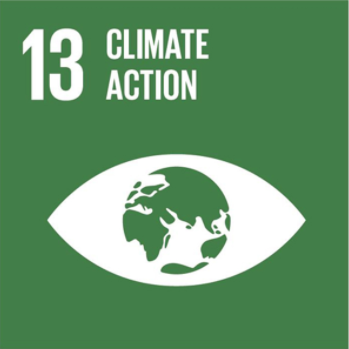
The aim of SDG 13 is to strengthen the resilience and adaptive capacity of more vulnerable regions, such as land locked countries and island states. It is still possible, with the political will and a wide array of technological measures, to limit the increase in global mean temperature to two degrees Celsius above pre-industrial levels.
The stocks in the SDG 13 Index have been identified as those making efforts to raise awareness and integrate measures into national policies and strategies.
Back to topSDG 13 Index vs S&P500
SDG 14 - Life Below Water
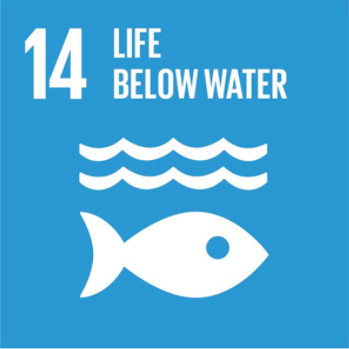
The aim of SDG 14 is to sustainably manage and protect marine and coastal ecosystems from land-based pollution, as well as address the impacts of ocean acidification.
The stocks in the SDG 14 Index have been identified as those making efforts to enhance conservation and the sustainable use of ocean-based resources.
Back to topSDG 14 Index vs S&P500
SDG 15 - Life on Land
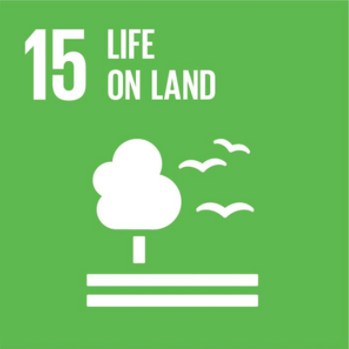
The aim of SDG 15 is to conserve and restore the use of terrestrial ecosystems such as forests, wetlands, drylands and mountains by 2020. Urgent action must be taken to reduce the loss of natural habitats and biodiversity which are part of our common heritage.
The stocks in the SDG 15 Index have been identified as those promoting the sustainable management of forests and halting deforestations is also vital to mitigating the impact of climate change.
Back to topSDG 15 Index vs S&P500
SDG 16 - Peace, Justice and Strong Institutions

The aim of SDG 16 is to significantly reduce all forms of violence, and work with governments and communities to find lasting solutions to conflict and insecurity.
The stocks in the SDG 16 Index have been identified as those strengthening the rule of law and promoting human rights, reducing the flow of illicit arms and strengthening the participation of developing countries in the institutions of global governance.
Back to topSDG 16 Index vs S&P500
SDG 17 - Partnerships For The Goals

The aim of SDG 17 is to enhance North-South and South-South cooperation by supporting national plans to achieve all the targets.
The stocks in the SDG 17 Index have been identified as those promoting international trade, and helping developing countries increase their exports, to assist in achieving a universal rules-based and equitable trading system that is fair and open, and benefits all.
Back to top